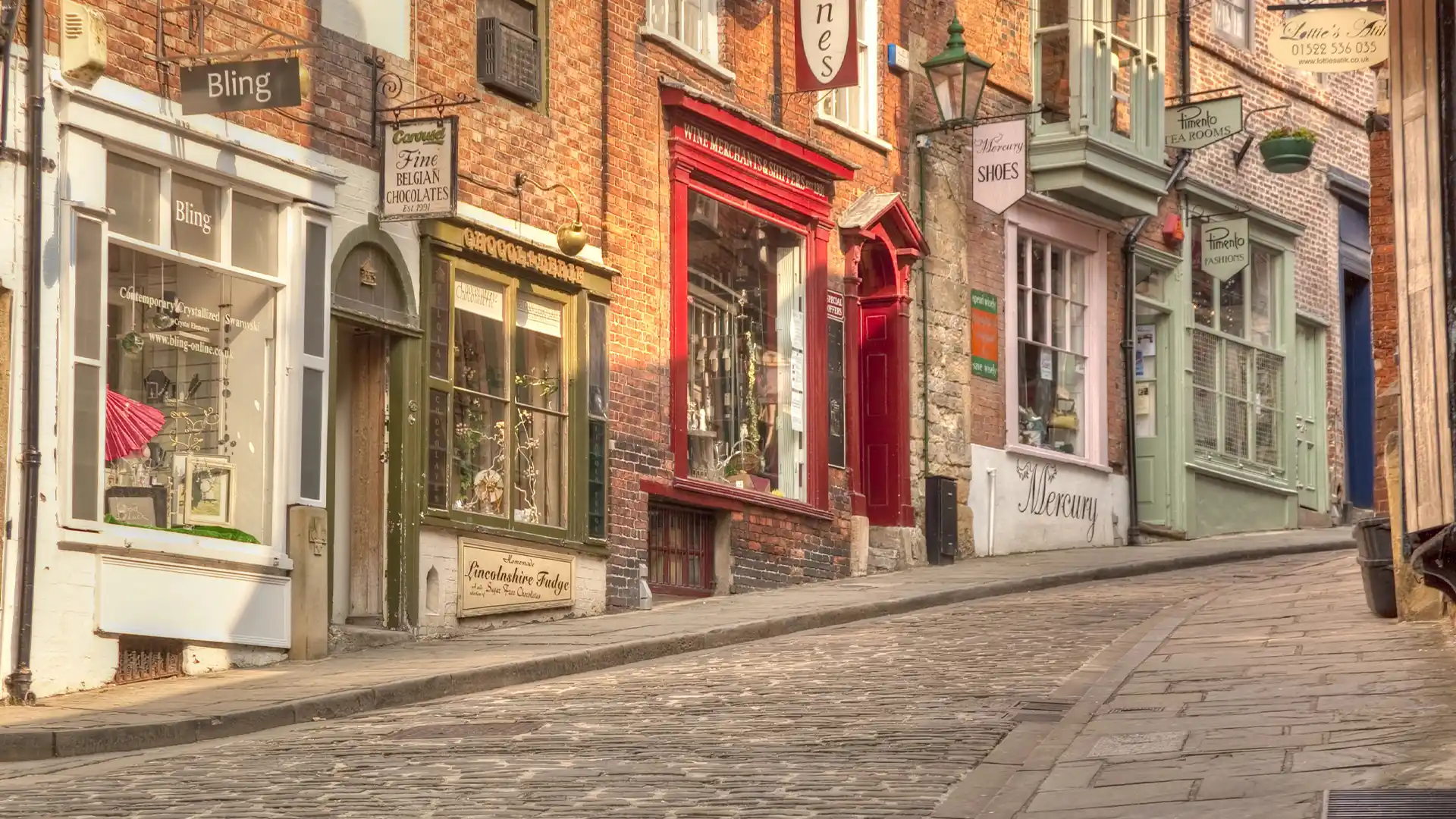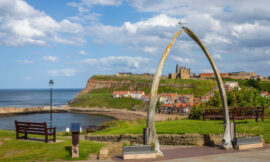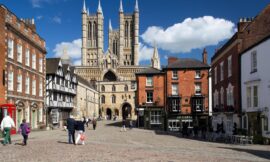Introduction
Steep Hill, located in Lincoln, England, is one of the most iconic and historic streets in the city. Renowned for its remarkable gradient, charming medieval architecture, and cultural significance, Steep Hill offers visitors a unique glimpse into Lincoln’s rich history. This essay delves into the historical, architectural, and cultural aspects of Steep Hill, exploring its development, notable landmarks, and the role it plays in the city’s contemporary life.
Historical Background
Steep Hill’s origins date back to medieval times, reflecting Lincoln’s evolution from a Roman settlement to a significant medieval city. The street forms part of the old city’s core and historically served as a crucial route connecting the lower parts of Lincoln to the higher grounds where the city’s most important landmarks, including Lincoln Castle and Lincoln Cathedral, are situated.
In medieval Lincoln, Steep Hill was a vital artery for commerce and travel. Its steep incline provided a natural defense and separation between the commercial areas of the lower town and the administrative and religious centers on the hilltop. The street’s steep gradient, which gives it its name, was both a physical challenge and a strategic advantage during times of conflict.
During the 19th century, Steep Hill and its surrounding areas underwent significant changes. The Industrial Revolution brought about transformations in urban planning and development, but Steep Hill managed to retain much of its historical charm. The preservation of its historic character is a testament to Lincoln’s commitment to maintaining its architectural heritage amidst the pressures of modernization.
Architectural Features
Steep Hill is renowned for its stunning array of historic buildings, which span several architectural periods. As visitors ascend the hill, they encounter a rich tapestry of styles, including medieval, Tudor, and Georgian. This architectural diversity offers a fascinating insight into Lincoln’s historical development.
1. Medieval and Tudor Buildings
At the bottom of Steep Hill, near the junction with High Street, visitors can find some of the earliest structures in Lincoln. Many of these buildings date back to the medieval period and are characterized by their timber-framed construction, steeply pitched roofs, and intricate detailing. One notable example is the Jew’s House, a medieval building with a distinctive brick façade and ornate carvings, which is believed to have been constructed in the 12th century.
As one progresses up Steep Hill, Tudor-style buildings become more prominent. The Tudor period, spanning from the late 15th to early 17th centuries, saw the construction of many homes and shops with characteristic overhanging upper stories, exposed timber frames, and decorative brickwork. The Castle Hotel, an example of Tudor architecture, stands as a reminder of the historical significance of the street.
2. Georgian Influences
Towards the top of Steep Hill, Georgian architecture becomes more prevalent. The Georgian era, which lasted from 1714 to 1830, is known for its elegant and symmetrical design. Buildings from this period on Steep Hill are characterized by their brick façades, sash windows, and decorative cornices. The Georgian influence reflects the city’s adaptation to changing architectural tastes and its growth during this period.
3. Cobbled Surface and Historic Streetscape
The cobbled surface of Steep Hill is a significant feature that enhances its historical ambiance. The uneven cobbles, while challenging for modern vehicles, add to the street’s charm and authenticity. The cobblestones have been carefully maintained to preserve the historical character of the area, providing visitors with an authentic experience of Lincoln’s past.
Notable Landmarks
Steep Hill is home to several notable landmarks that contribute to its historical and cultural significance.
1. Lincoln Cathedral
At the top of Steep Hill stands Lincoln Cathedral, one of the most impressive examples of Gothic architecture in England. The cathedral, completed in 1311, dominates the skyline and serves as a focal point for the city. Its intricate façade, towering spires, and stunning stained glass windows make it a must-see attraction for visitors. The cathedral’s position at the top of Steep Hill underscores the street’s historical role in connecting the city’s religious and administrative centers.
2. Lincoln Castle
Adjacent to the cathedral is Lincoln Castle, a medieval fortress that has played a crucial role in the city’s history. The castle, originally built by William the Conqueror in 1068, has been a royal residence, a military stronghold, and a prison. The castle’s ramparts offer panoramic views of Lincoln and the surrounding countryside, providing visitors with a glimpse into the city’s strategic importance during medieval times.
3. The Collection and Usher Gallery
Located near the base of Steep Hill, The Collection and Usher Gallery is a cultural institution that houses a diverse range of art and historical artifacts. The gallery’s exhibitions include works from various periods, including contemporary art and archaeological finds from Lincolnshire. Its presence adds a modern cultural dimension to the historic surroundings of Steep Hill.
Cultural Significance
Steep Hill’s cultural significance extends beyond its architectural and historical features. The street is a vibrant hub of local life, hosting a variety of shops, cafes, and artisan boutiques. Its unique character makes it a popular destination for tourists and a beloved part of the local community.
1. Tourism and Local Economy
Steep Hill attracts visitors from across the globe who come to experience its historic charm and architectural beauty. The street’s shops and cafes offer a range of goods and services, from handcrafted souvenirs to traditional English teas. The influx of tourists contributes to the local economy, supporting businesses and providing a livelihood for many residents.
2. Festivals and Events
Throughout the year, Steep Hill hosts various events and festivals that celebrate Lincoln’s cultural heritage. These events include historical reenactments, craft fairs, and seasonal markets. The street’s festive atmosphere and historical backdrop provide a unique setting for these activities, drawing both locals and visitors.
3. Community Engagement
Steep Hill plays a central role in community life, with local residents and businesses working together to maintain and promote the area’s historical character. Community initiatives, such as restoration projects and heritage conservation efforts, reflect the dedication of the people of Lincoln to preserving their city’s unique heritage.
Challenges and Preservation Efforts
Maintaining the historical character of Steep Hill presents several challenges. The steep gradient and cobbled surface pose difficulties for modern transportation and accessibility, requiring careful management to balance preservation with practicality. Additionally, the wear and tear on historic buildings necessitate ongoing conservation efforts to protect and restore their architectural integrity.
Efforts to preserve Steep Hill include regular maintenance of the cobbled streets, restoration of historic buildings, and initiatives to promote heritage tourism. Local authorities and heritage organizations collaborate to ensure that the street’s historical and cultural significance is upheld while accommodating the needs of modern visitors and residents.
Conclusion
Steep Hill in Lincoln stands as a testament to the city’s rich history and architectural heritage. Its steep gradient, historic buildings, and cultural significance make it one of the most distinctive and cherished streets in England. From its medieval origins to its role in contemporary life, Steep Hill offers a unique glimpse into Lincoln’s past and present. The street’s preservation and ongoing cultural significance reflect the enduring legacy of Lincoln’s historical journey, making Steep Hill a vital part of the city’s identity and heritage.



